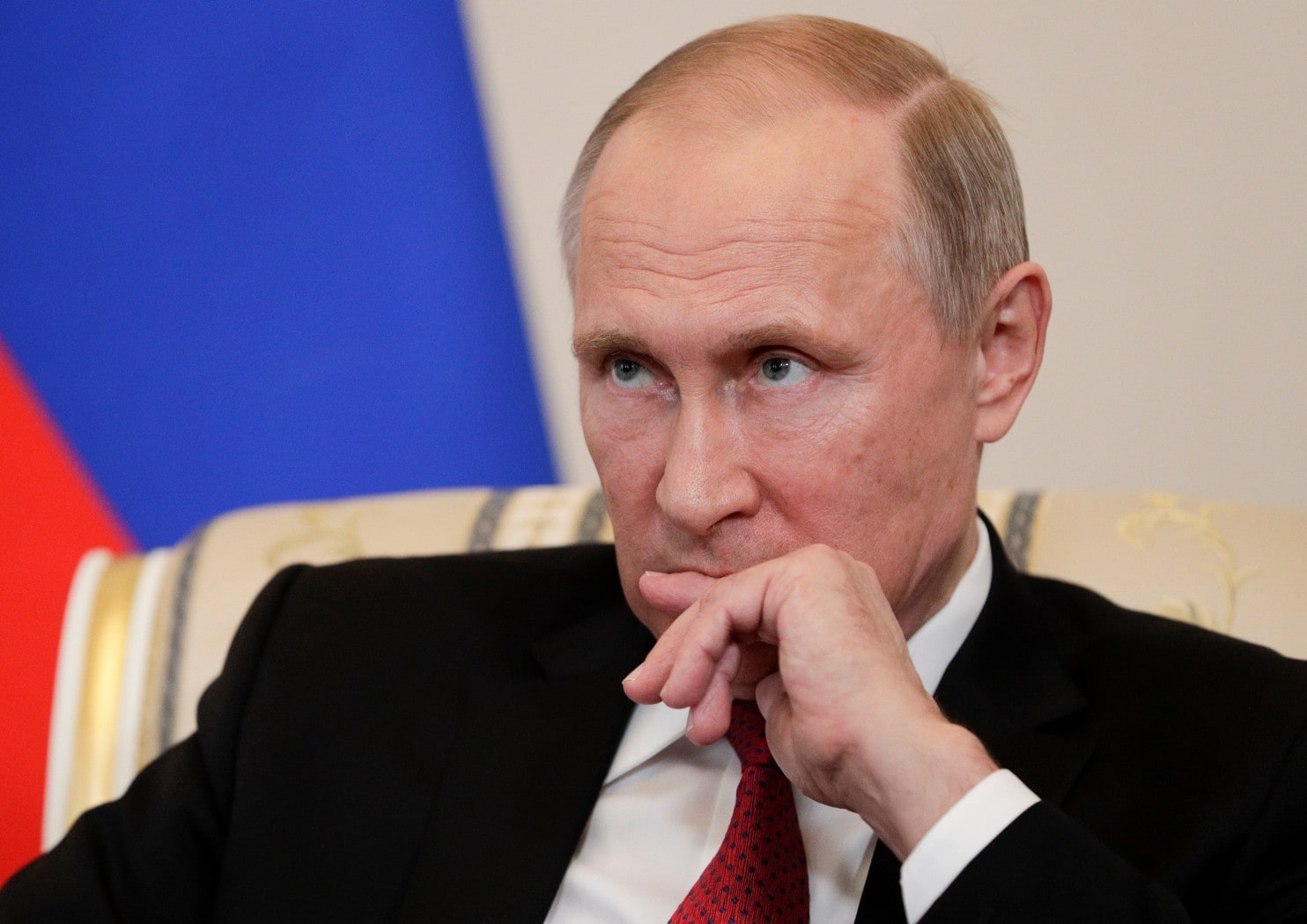Comments and Issues
What could the outcome of Ukraine invasion mean for Putin?
Published
2 years agoon
By
Olu Emmanuel
The Ukrainian military is woefully outnumbered and the vast majority of Ukrainian troops are militia fighters or raw recruits.
Russia’s problem is logistics
During the first week of the invasion did you notice how Russia made massive gains? By March 1st they were knocking on the door of Kyiv and rapidly advancing into Odesa. Then everything stopped.
From March 1st everything stopped cold. Then through March and April, the only movement Russia made was a complete retreat out of the Northern sector.
Kinda weird right? I mean how did Russia take so much territory so quickly and then get stopped. I mean something was clearly working in that opening week so why not keep doing whatever that was?
Well, what happened is simple and as old as warfare itself. Russia ran out of supplies.
Russia operates with “Batallion Tactical Groups” or BTGs for short. Each BTG has about 1000 men, some tanks, some artillery, and whatever else they need to be independent in combat operations.
An average BTG has about 5–7 days’ worth of supplies on hand. They have 7 days of rations, 7 days of ammo, and enough fuel to accomplish their mission.
You see Russia thought Ukraine would fold in that 5–7 day window and resupply wouldn’t really be needed very much. They didn’t figure that Ukraine would actually grow stronger in the face of this invasion and target what limited logistical structures had been put in place.
So why did the Russian advance stop after the first week? Because Russian units are only supplied for 1 week. Once that week is over they need to be resupplied.
So Russia tried to rush supplies to the front. With train lines cut Russia had to ship supplies to the border, load them on trucks, and drive it on highways to the front. Ukraine grew wise to this quickly and started attacking supply convoys. Ukrainian Alpha SpecOps units would ambush convoys as they traveled down the same few highways day in and day out.
Russia began abandoning tanks and APCs due to running out of fuel and Russian troops began looting grocery stores for food. Russia managed to get some supplies to the front but only enough to keep 10–20% of their combat units effective.
So Russia tries to continue the advance but they cannot supply the 15 battalions in the area so instead of advancing with 15 battalions, they advance with 3. Ukraine is able to effectively defend against these smaller attacks.
Russia’s morale drops as Russian troops question the war and grow hungry. Ukraine strikes and counterattacks, driving Russia back on 2 of the 3 fronts.
Russia has had to halt its advance to sure up its supply situation.
- Russia is using civilian trucks to make up for the truck shortage and keep supplies coming
- Russia has abandoned the Northern front to simplify the supply situation
- Russia has tried to capture as many airports as possible so that they can fly in supplies
- Russia is building a giant gas pipeline from Russia to the frontlines.
Will any of this work? Maybe. There is a chance Russian can begin to supply 70% of their combat units enough for combat operations.
So let’s say Russia decides to call up reserves. Ok, what now?
Well, first these guys need guns right? They need weapons, helmets, uniforms, ammo, and food. Then they need artillery support and tanks so Russia has to pull tanks out of storage. Russia does not have any spare tanks sitting around and is even pulling tanks out of Georgia and Syria to reinforce their units in Ukraine.
Russia has lots of tanks in storage- likely around 10,000. The problem is that these tanks have sat in empty fields for decades. Maybe 25% of Russia’s stockpiled weapons can be made combat-ready in 3 months and even that is a herculean effort.
So for at least 3 months, Russia has to spend billions trying to reactivate old outdated cold-war era equipment.
Even if Russia manages to reactivate all that gear it will matter little.
- These reserves are not regularly trained like US reserves. These guys are as green as they come and will get slaughtered. Russia will need to either retrain a force 3 times larger than their entire Army or send these guys in green.
- How will Russia supply these men? They have 200,000 men active in Ukraine and cannot even supply even them. If they had 500,000 poorly trained reservists to the mix how does that help the Russian supply problem?
- The political capital Putin would have to expend to call up reserves would be massive. The war is already questionable and Putin has cracked down hard on the opposition. The media and the people are being heavily censored. Calling up 1,000,000 reservists for a “military operation” would hurt Putin’s standing in significant ways. It may even spell an end to his reign.
But even if Russia manages to supply the men and Putin is able to weather the storm it still matters little.
Case in point is the Russian invasion of Finland in the 1930s.
Finland had a small military of about 100,000 men. They had virtually no tanks, no air support, and WW1-era artillery. The mighty Red Army believed it would waltz into Finland and crush all resistance.
Well, that didn’t happen. The inexperienced and poorly supplied Russians were slaughtered in staggering numbers. The Russian strategy of “charge forward” was not effective it turns out. Russia had to send more men, change tactics, and invest in its logistical infrastructure to eventually prevail. In the end, 150,000 Russians died and a further 200,000 were injured.
From ancient Rome to Medieval Europe the lesson has always been the same. 100 well-trained, well-equipped, and well-supplied troops can easily best 1,000 poorly equipped militia.
Trending

 Football1 week ago
Football1 week agoGuardiola advised to take further action against De Bruyne and Haaland after both players ‘abandoned’ crucial game

 Health & Fitness1 day ago
Health & Fitness1 day agoMalaria Vaccines in Africa: Pastor Chris Oyakhilome and the BBC Attack

 Featured5 days ago
Featured5 days agoPolice reportedly detain Yahaya Bello’s ADC, other security details

 Comments and Issues1 week ago
Comments and Issues1 week agoNigeria’s Dropping Oil Production and the Return of Subsidy

 Education6 days ago
Education6 days agoEducation Commissioner monitors ongoing 2024 JAMB UTME in Oyo

 Business6 days ago
Business6 days agoMaida, university dons hail Ibietan’s book on cyber politics

 Crime6 days ago
Crime6 days agoPolice take over APC secretariat in Benue

 Business5 days ago
Business5 days agoDebt servicing gulps 56% of Nigeria’s tax revenue, says IMF


Pingback: What could the outcome of Ukraine invasion mean for Putin? - Top Naija Headlines